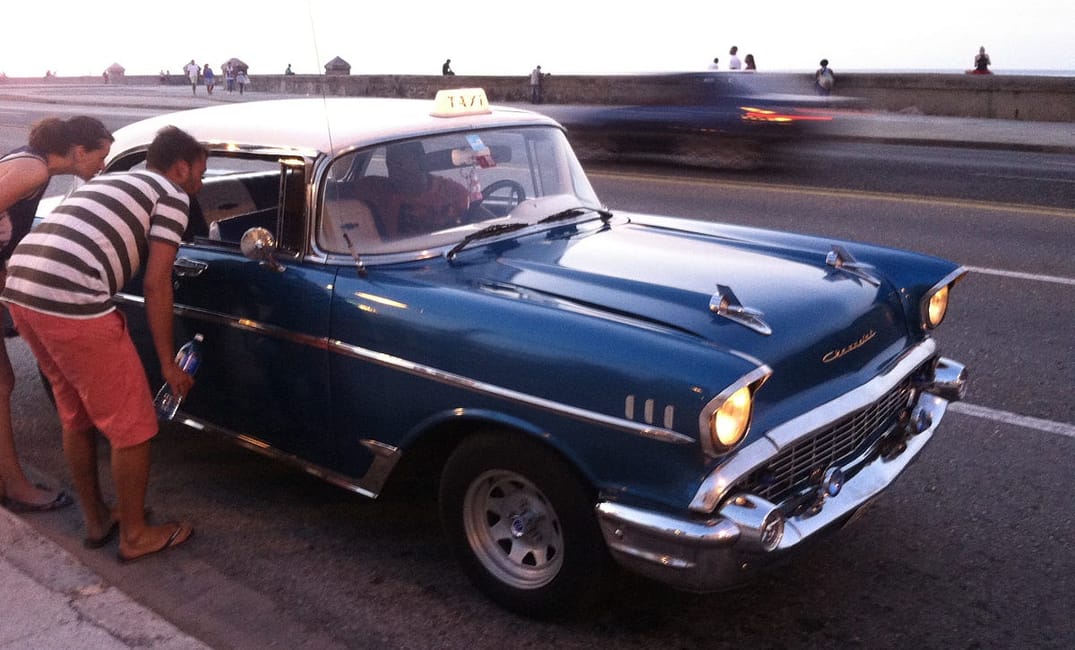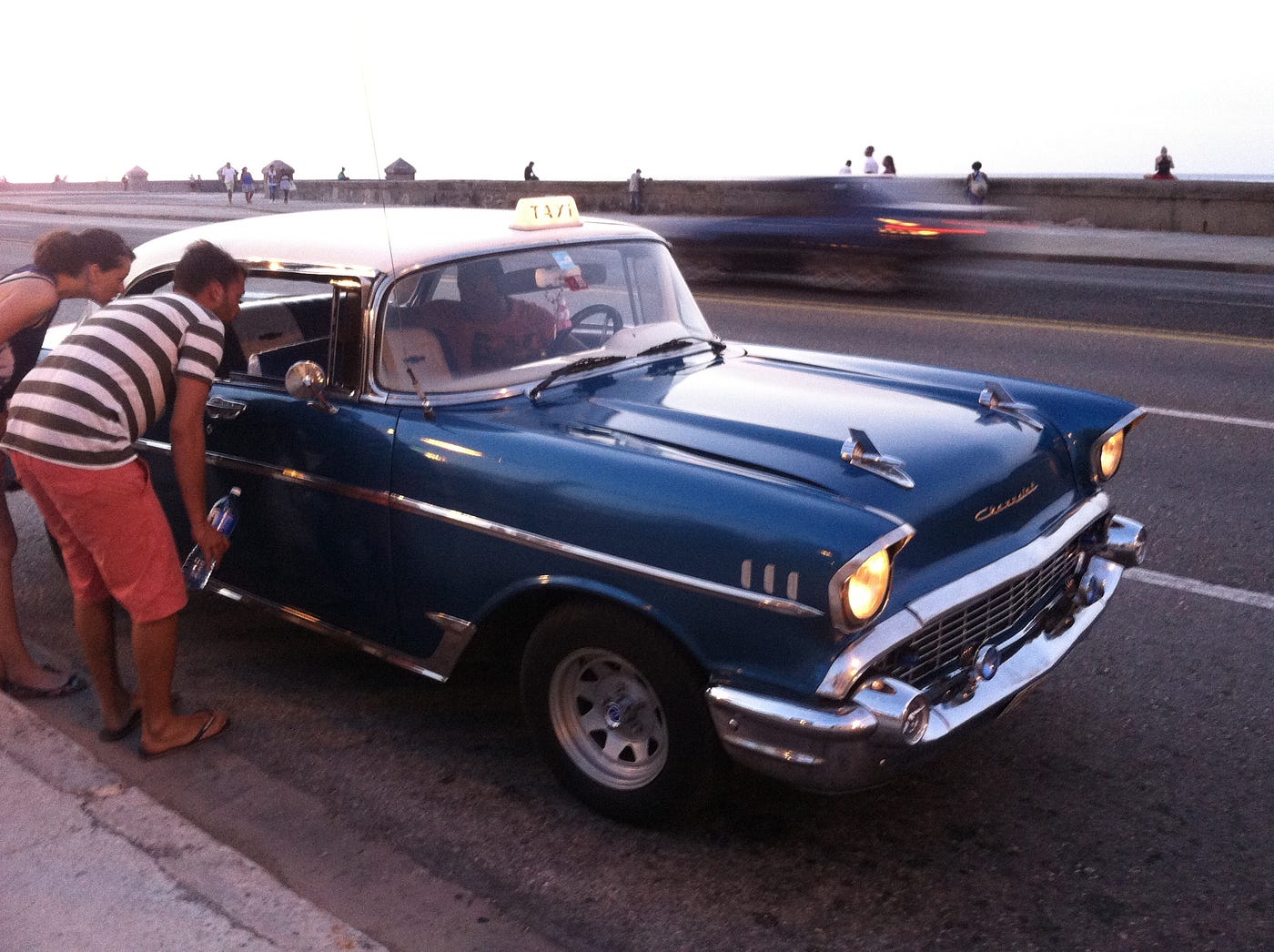
After a 50-year hiatus, commercial flights between the US and Cuba are set to resume again this spring. Just before Obama and Raul Castro unblocked each other on Facebook, I had the privilege of visiting Havana and its environs (which I recommend) in the summer (which I don’t). I was living in Mexico City at the time and couldn’t resist the opportunity to take a quick jaunt across the Gulf to see what was going on in the country Condoleezza Rice once called an “outpost of tyranny.”
Without dipping too much into hyperbole, I’ll only say that the country is breathtaking and quite lacking in tyranny. (Condoleezza, stick to your day job — you’re not the most reliable travel writer.) What I did see were a whole lot of giant avocados, stray dogs, shirtless men, street musicians and Soviet automobiles.
What follows is a photographic account of my Havana nights (with two supplementary photos from other photographers in the instances when my camera struggled to capture the scene).
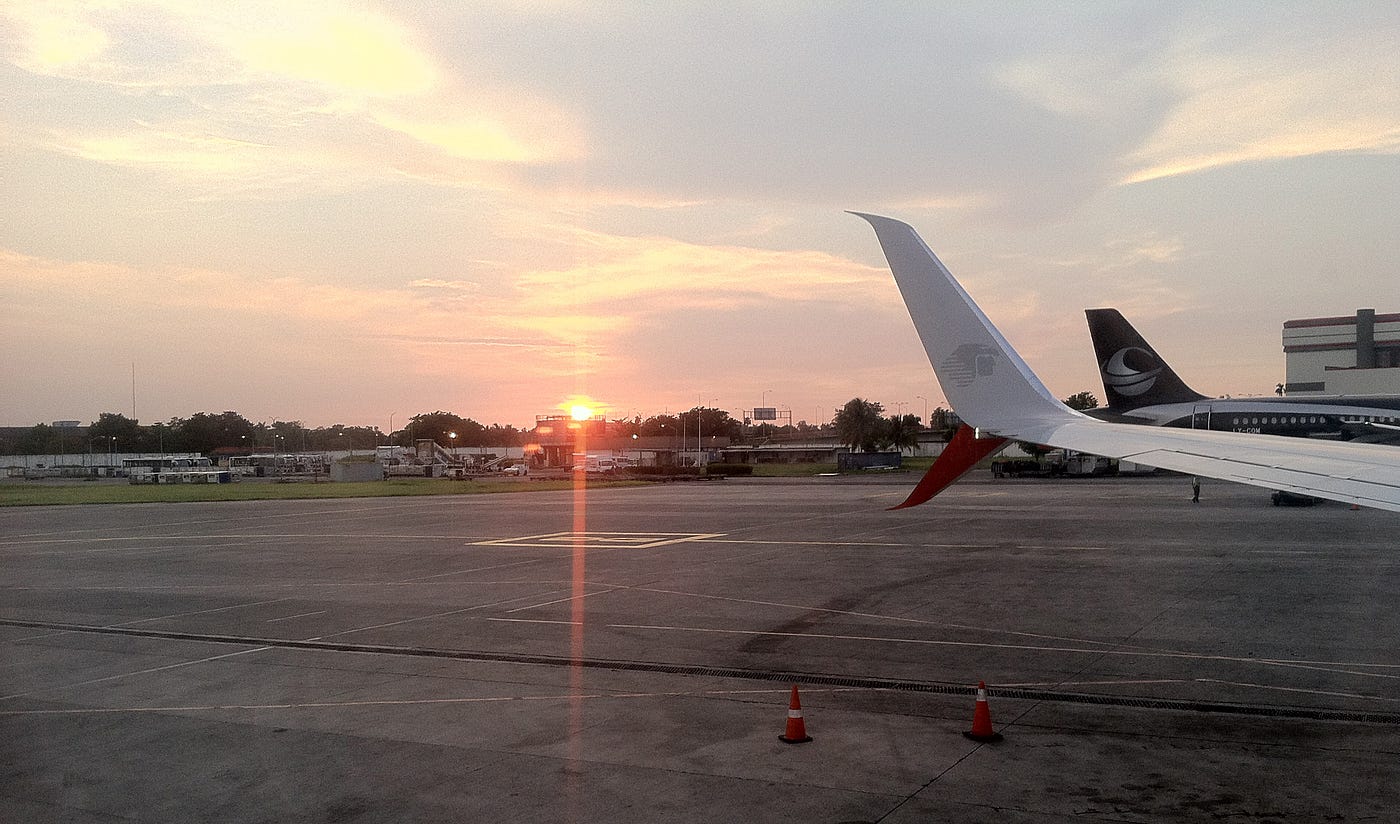
Having never been to a communist country before, I was so curious about the infrastructure and organization. Was everything worker owned? Would the airport look different from capitalist airports? Was it as decrepit as Joseph McCarthy would have me believe? I had to take a touristy airplane-landing shot of the sunset. There were no potholes or rusty ladders. Even the pylons were, like American traffic cones, suspiciously mundane. The Caribbean sunset was not, though.
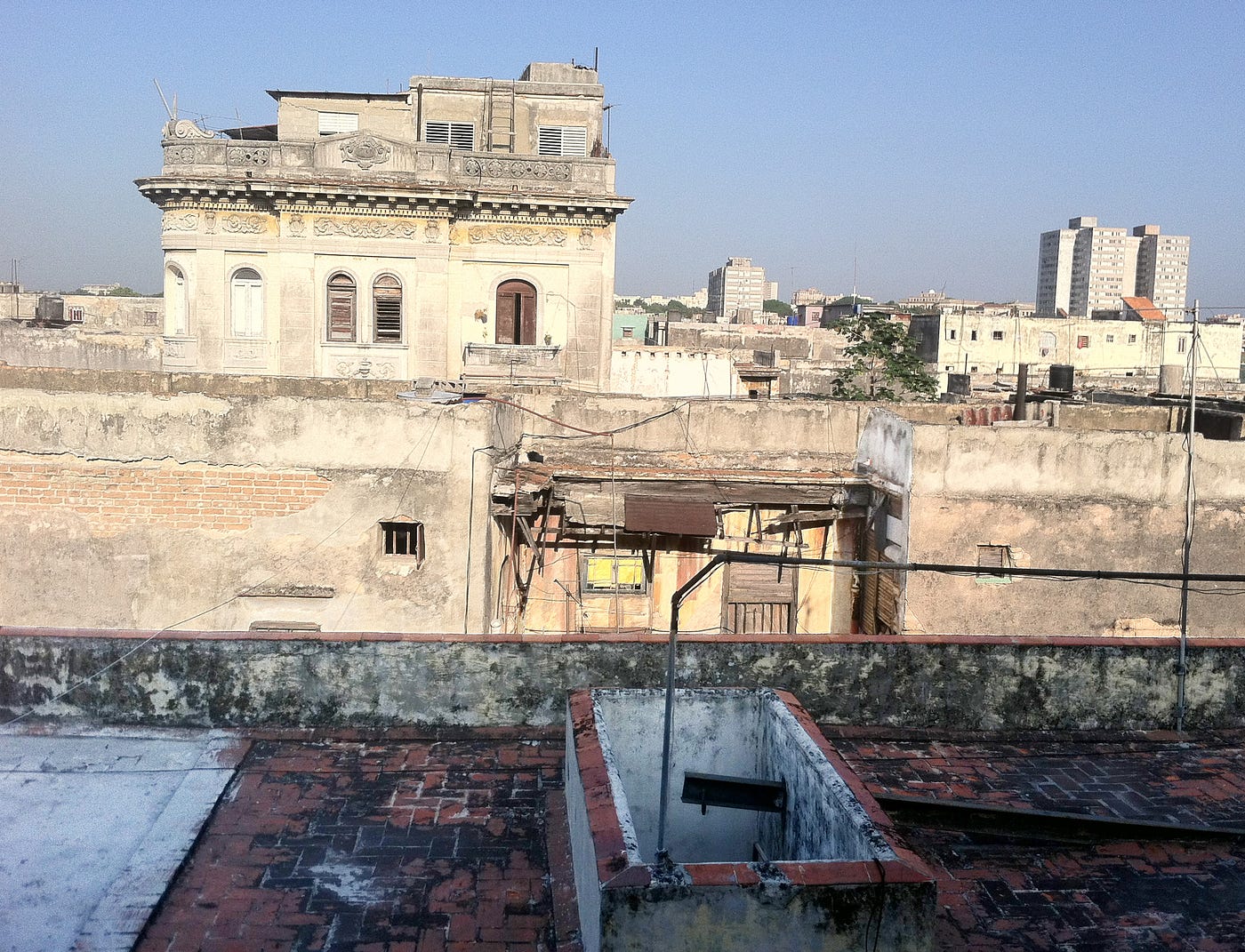
This was the view of the city of Havana from the deck of my casa particular. Tip: stay away from hotels if you visit, and stay in a casa particular. That means you get to stay with a local in their house, listen to their recommendations and usually eat their food too.
The Spanish architecture, where it’s still resplendent, is beautiful to behold — though some of the buildings are a bit decrepit. Havana is a dense city with people living in dense apartments just like in Manhattan or San Francisco.
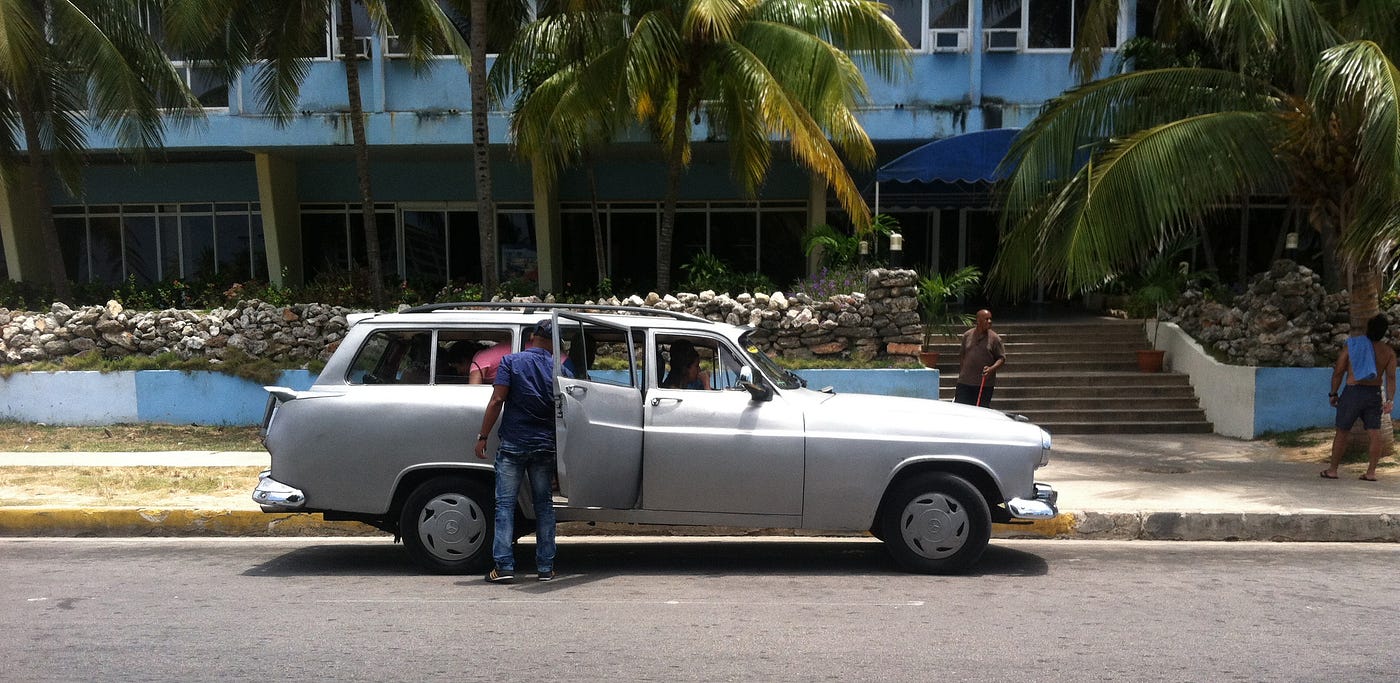
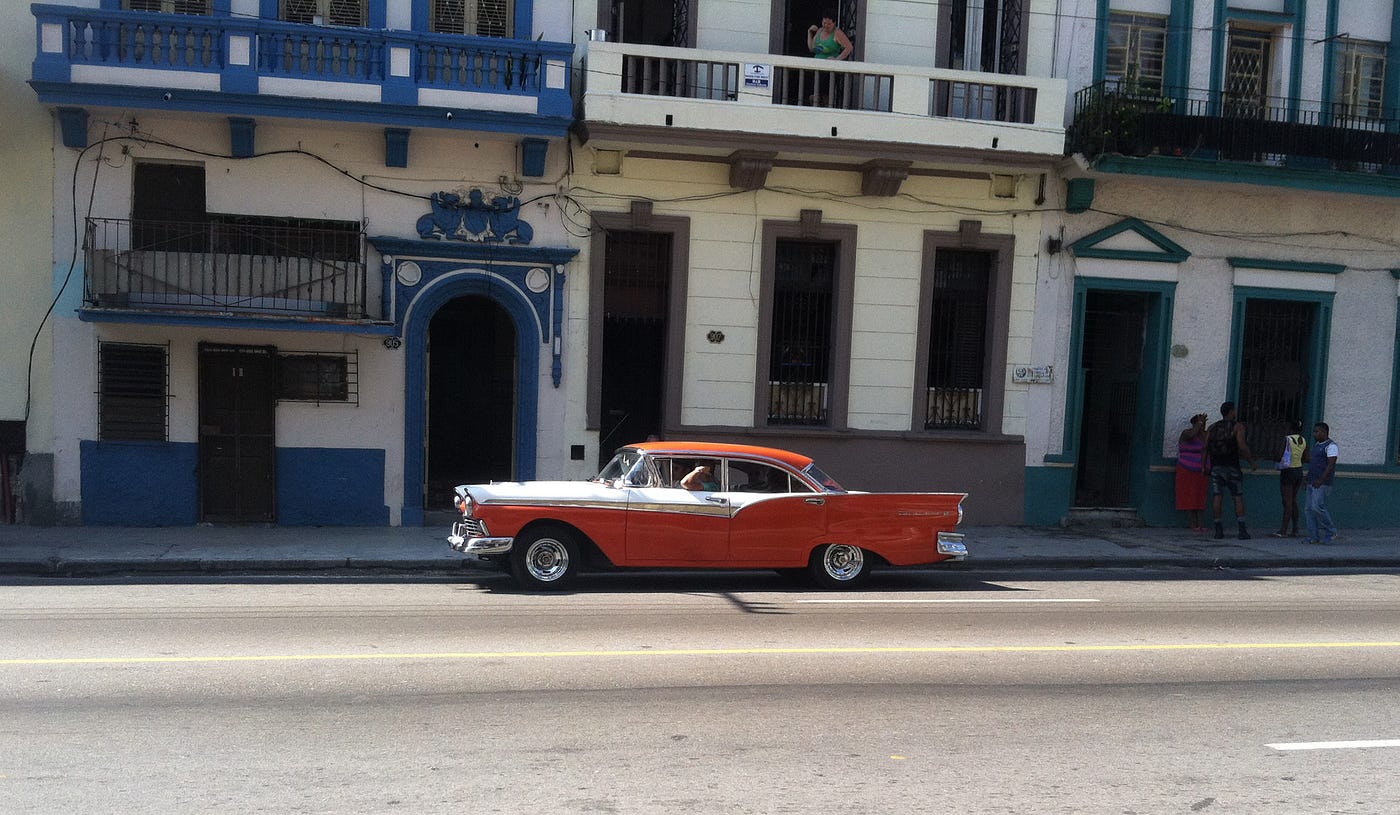

Havana doesn’t look that different from many other Caribbean countries. I’d spent time in Mexico and Costa Rica, and the biggest difference was the cars. It’s as if the Cold War never happened. Soviet Ladas and American Bel Aires rev beside each other in harmony.
I’d never seen a Soviet car before, so I asked the Cubans what they thought of the Lada. “Strong car,” said the taxi driver in the above photo, flexing his bicep. “Very strong.” Hmm.
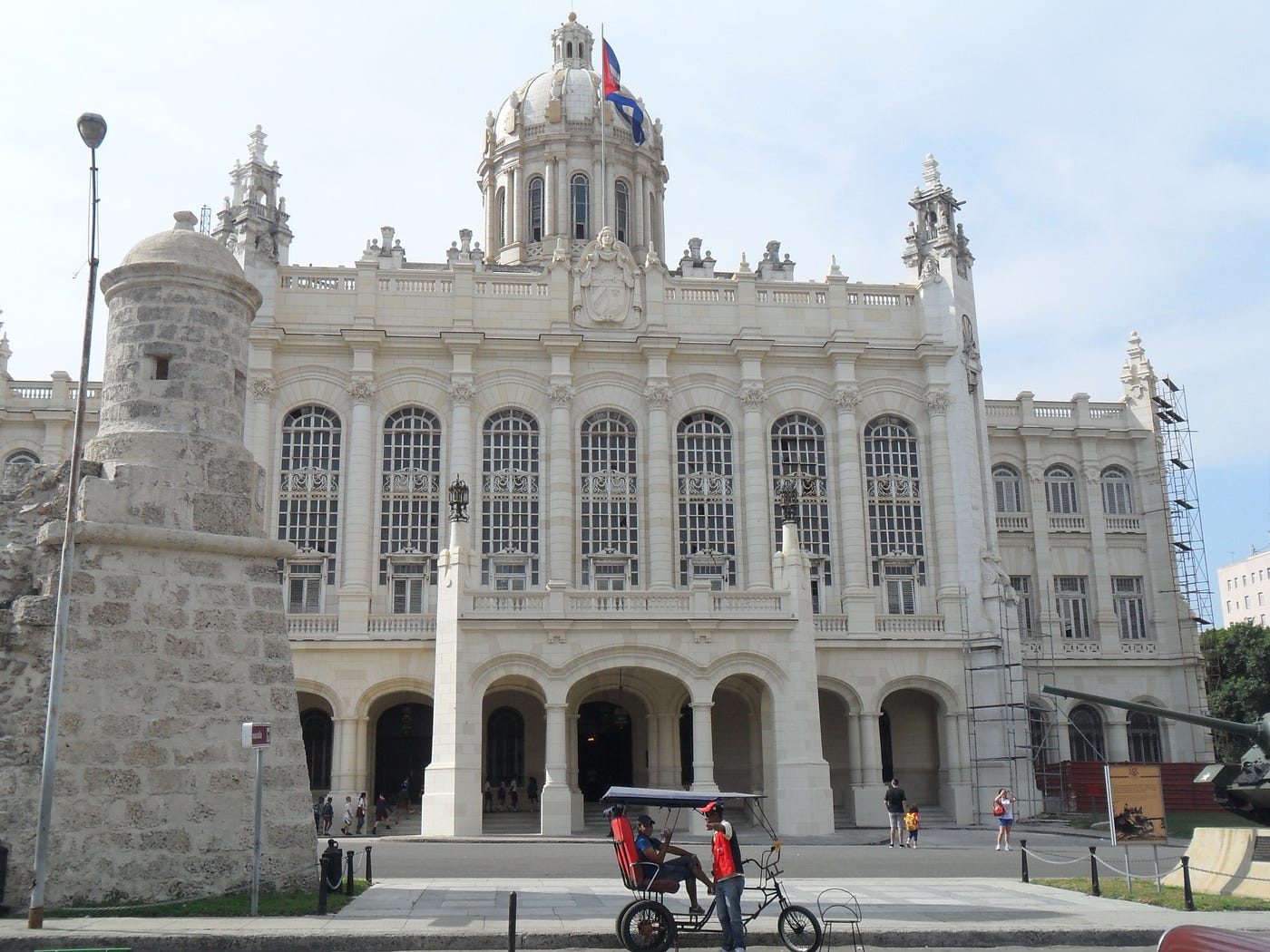
One of the coolest things that the revolutionaries did after their victory was turn the old, opulent Presidential Palace into an open museum — the Museo de la Revolución. It’s full of murals, artifacts and other revolutionary archives, plus a whole lot of art — like the mural below.

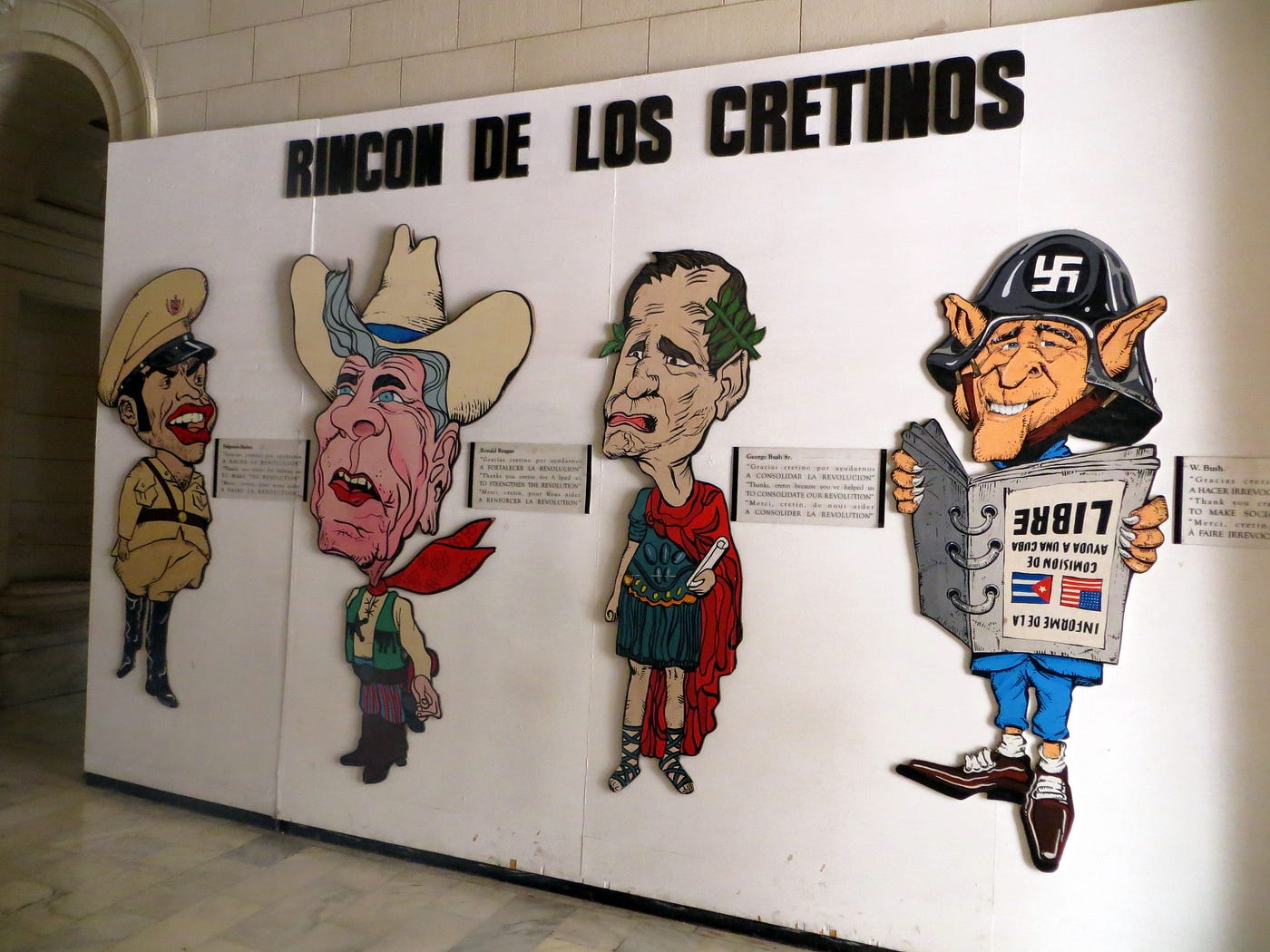
Amid more serious historical artifacts, like the dolls and dresses the Cuban revolutionary women used to smuggle munitions, there were a few artistic or cartoonish displays, like this one, the Rincon de Los Cretinos. That’s Batista, Reagan, Bush I and Bush II, from left to right. “Thank you, Cretin, for making socialism IRREVOCABLE!” the plaque next to W. reads.

Just down the street from the Museo de la Revolución sits El Capitolio, which was under construction when I visited. It looks pretty similar to San Francisco’s own City Hall dome, except for the lack of Priuses out front.
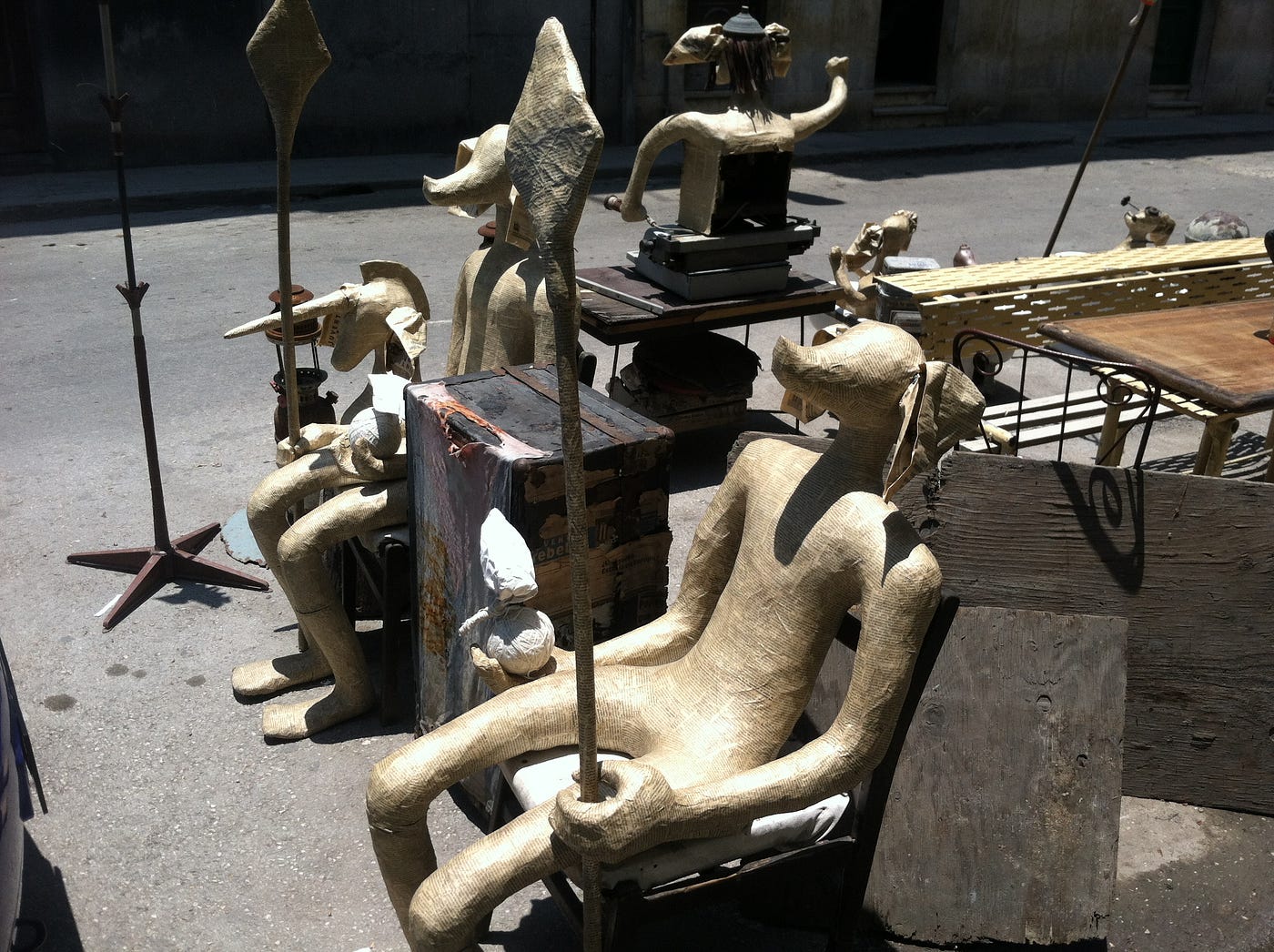
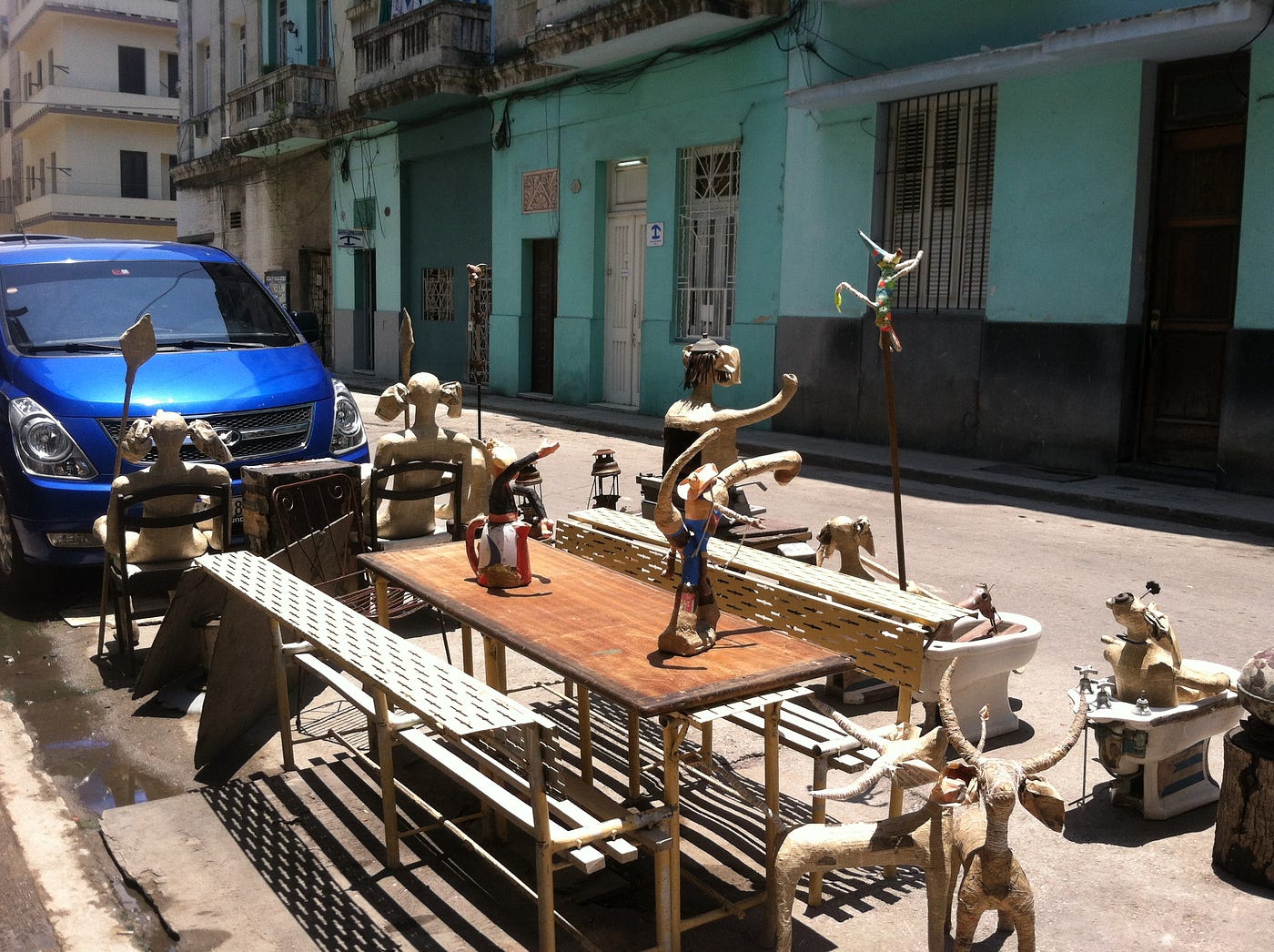
Havana is home to a roaring arts scene. Many artists, including this sculptor, bring their work out onto the streets during the day. I’m not entirely sure what’s going on with these papier-mâché guardians, but they look pretty content lazing in the astonishingly hot sun.
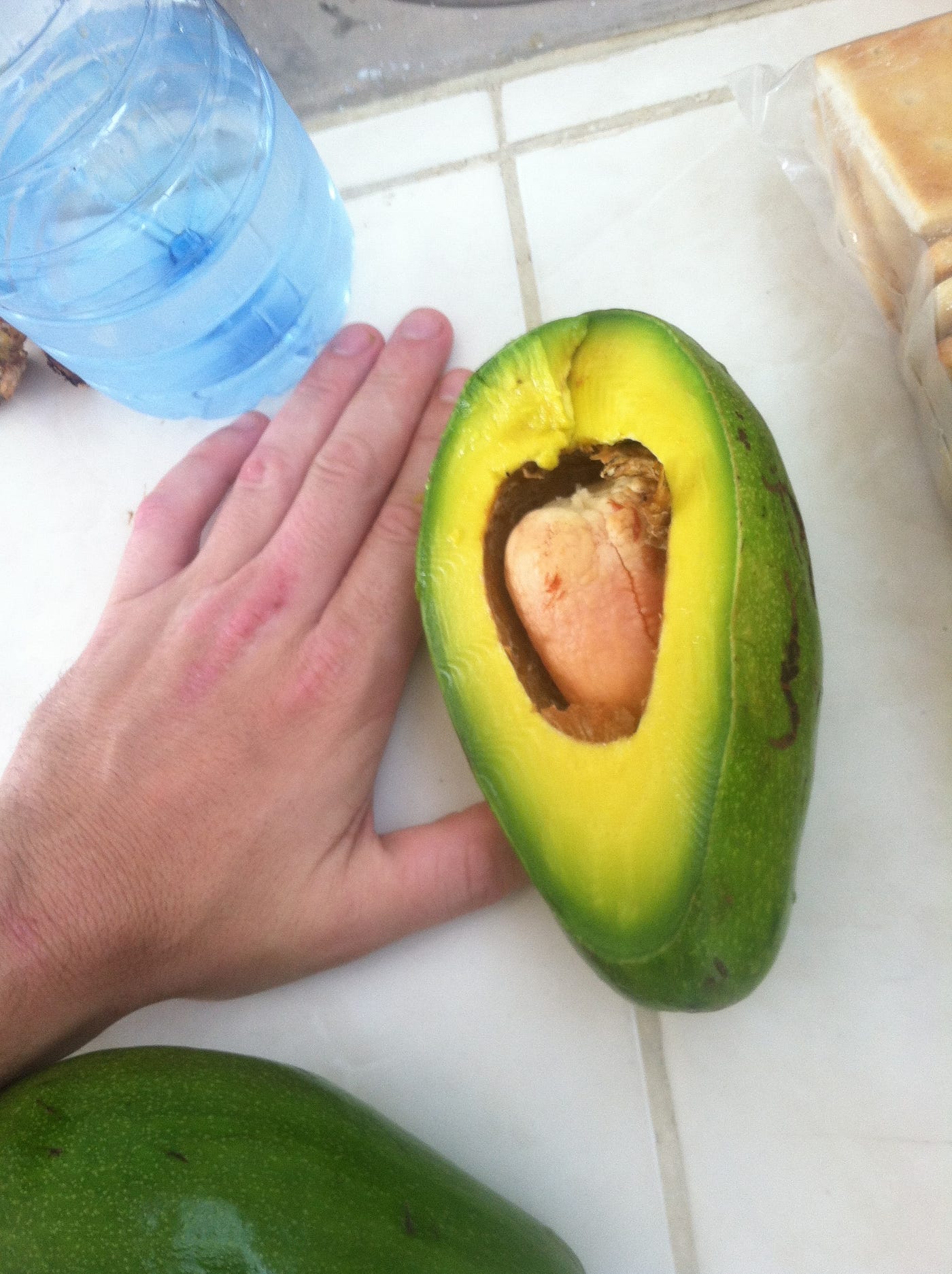
I didn’t take nearly enough photos of my meals — I was on a budget, and hence I bought a lot of food off the street from produce carts, including mangos, bananas and these avocados the size of my hand. This huge avocado cost the equivalent of 30 US cents. Fun fact: all agriculture in Cuba is organic and has been since the 1990s.
If you’re looking to eat out, expect meals in the $8 to $10 range (before drinks) and a lot of lobster. I ate more lobster in Cuba in a week than I usually do in a year in the US. It was hard to resist for the price.
(Also, don’t make the same mistake as me by bringing only $300 — it’s difficult for Americans to use their credit cards or withdraw from ATMs, so whatever you bring is all you’ll have. I spent too much of my money on $8 lobster entrees, so toward the end of my week, I was eating avocados and crackers — a $1 meal in Havana.)
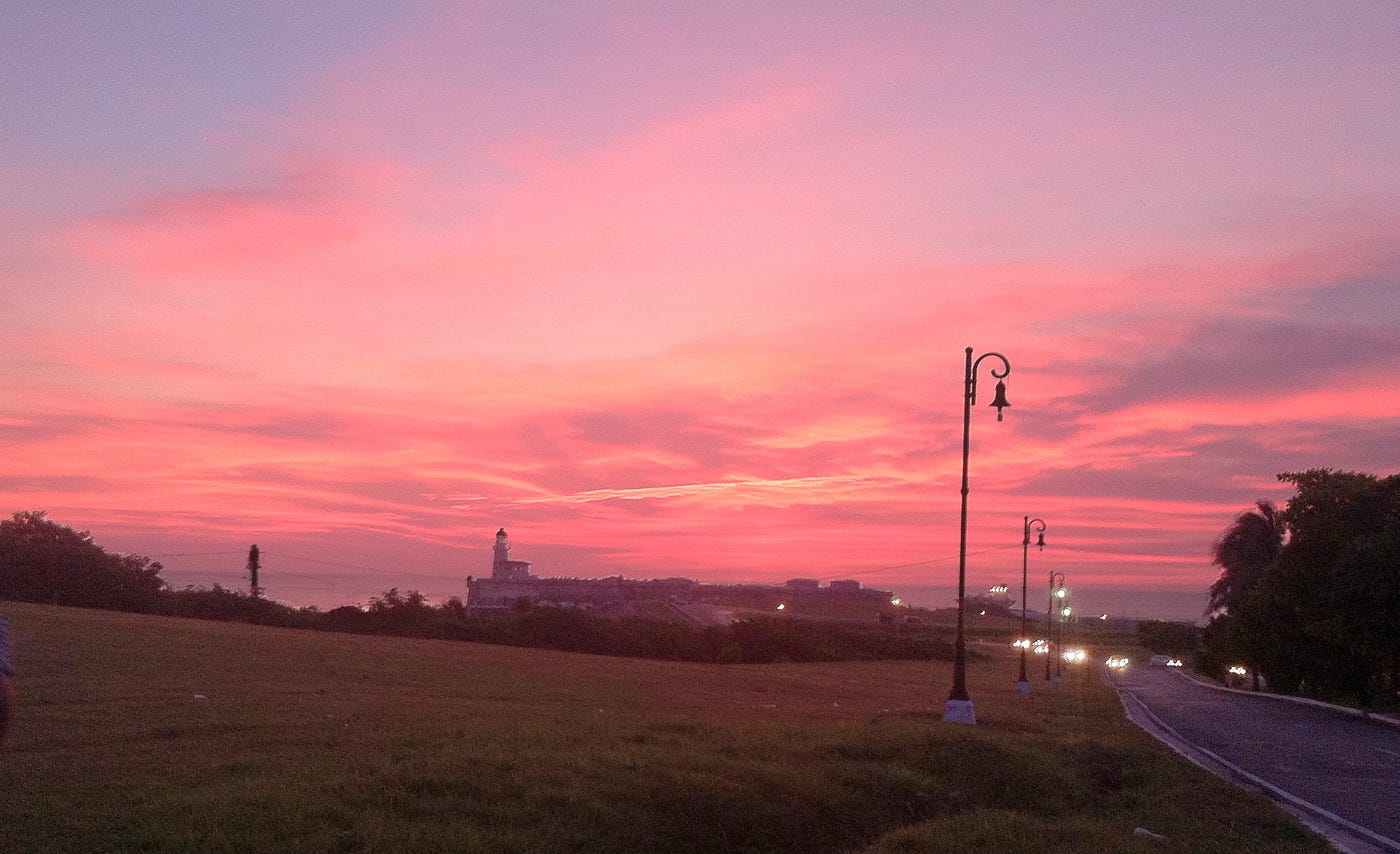
Of course, I have to end with one of those brilliant Cuban sunsets. I snapped this one on a balmy evening on the northeast side of Havana near the ocean.
The next day, I flew back to the US, bringing back as much Cuban rum as I could fit in my checked bag. For $4 per liter, how could I not? If only the agriculture people at customs would let you bring back avocados and lobsters.



